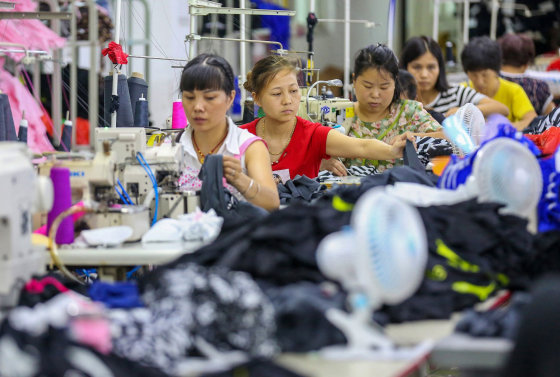From tractor parts to tilapia, magnets to mirrors, President Donald Trump ratcheted up existing tariffs Friday on billions of dollars of imported Chinese goods from 10 percent to 25 percent -- and threatened to add additional tariffs that would leave American manufacturers and consumers paying higher prices on almost everything the country imports from China. What exactly does a hit on that many billions in goods look like?
To show the economic stake of each of the $250 billion in items already being taxed, NBC compiled a searchable database of the tariffs along with their import values for 2015-2017. The bigger the dollar amount, the more the U.S. economy spends on these goods.
The tariffs represent part of President Donald Trump's leverage to compel Beijing to reform its "unfair" trade practices, including alleged intellectual property theft.
The most impacted products are electronics parts, which represent a hit on $100 billion worth of goods, followed by $8 billion in wooden furniture, $6 billion in upholstered seats, $6 billion in aluminum car tire wheels, and $5 billion in vacuums.
Seafood is also under siege: The U.S. imports billions of dollars worth of seafood from China every year, and the tariffs are affecting popular menu items such as $177 million in peeled crawfish tail meat, $104 million in sole fillets, and $104 million in catfish.
American appetite for Chinese-made handbags could also take a drubbing under the list, which represents about half of the $500 billion worth of goods the U.S. imports from China annually. The list levies tariffs on over $2 billion in plastic handbags, $1.7 billion in leather handbags, and $2.3 billion in handbag components.
The database also includes over 1,000 categories that haven't been imported for the past three years. Those items included agricultural products like chicken, eggs, and some types of fish, along with industrial products like wooden railroad ties and yarn.
The tariff list is meant to affect "products that currently are imported," the offices of U.S. Trade Representative (USTR) Robert Lighthizer said, "or could be imported in the future."
In a statement when it announced the finalized tariff list, the Office of the United States Trade Representative said that "China has been unwilling to change its policies involving the unfair acquisition of U.S. technology and intellectual property" and has instead responded "by taking further steps to harm U.S. workers and businesses."
Trump Friday once again tweeted his erroneous claim that the U.S. trade deficit with China is $500 billion and the unsupported talking points that tariffs generate revenue and protect American jobs.
In fact, the trade deficit with China under Trump rose from $375 billion to $419 from 2017-2018. Economists argue that number is also deceptive because the components and raw materials come from many countries, but they are given final assembly in China, according to Industry Week.
The Chinese Ministry of Commerce said the government “deeply regrets that it will have to take necessary countermeasures" in a statement Friday, without specifying what those might be.
During an escalation last fall in the trade war, China responded by imposing duties on its batch of $60 billion in tariffs on U.S. imports.
But there are other more subtle steps it could take to squeeze American businesses too, requiring additional regulation, for Chinese-based executives to be fluent Chinese speakers or even placing capital controls on repatriating profits, Ludovic Subran, global head of macroeconomic research at Allianz and chief economist at Euler Hermes, told NBC News.
In a previous statement, China accused the United States of "trade bullyism" and said the U.S. was pursuing an "America First" agenda.
